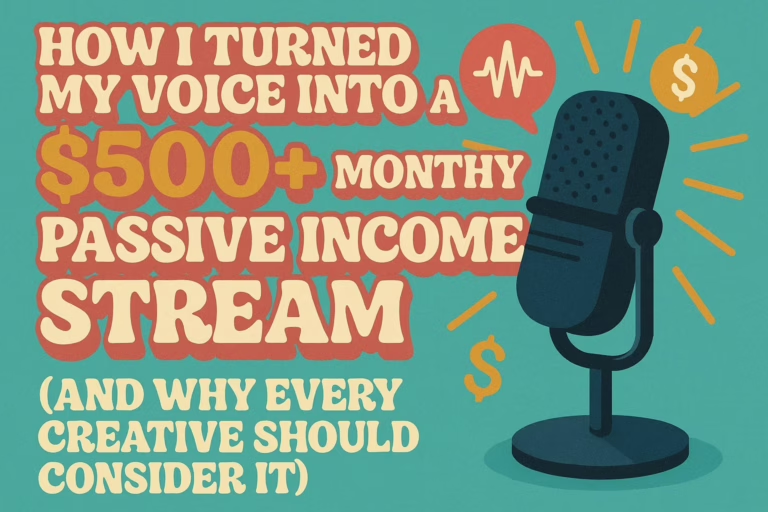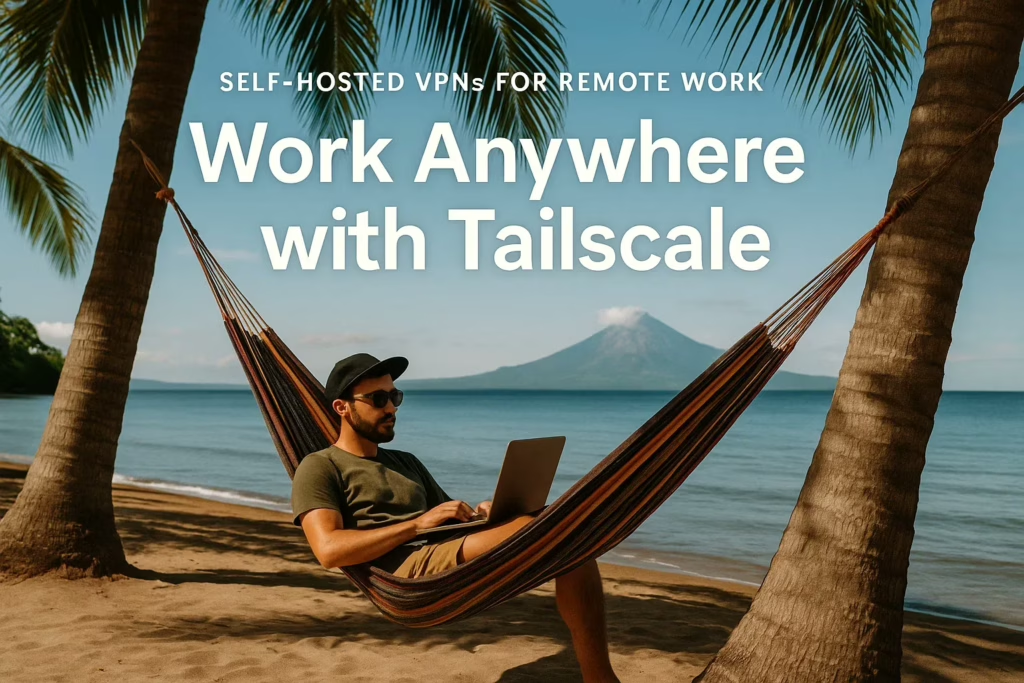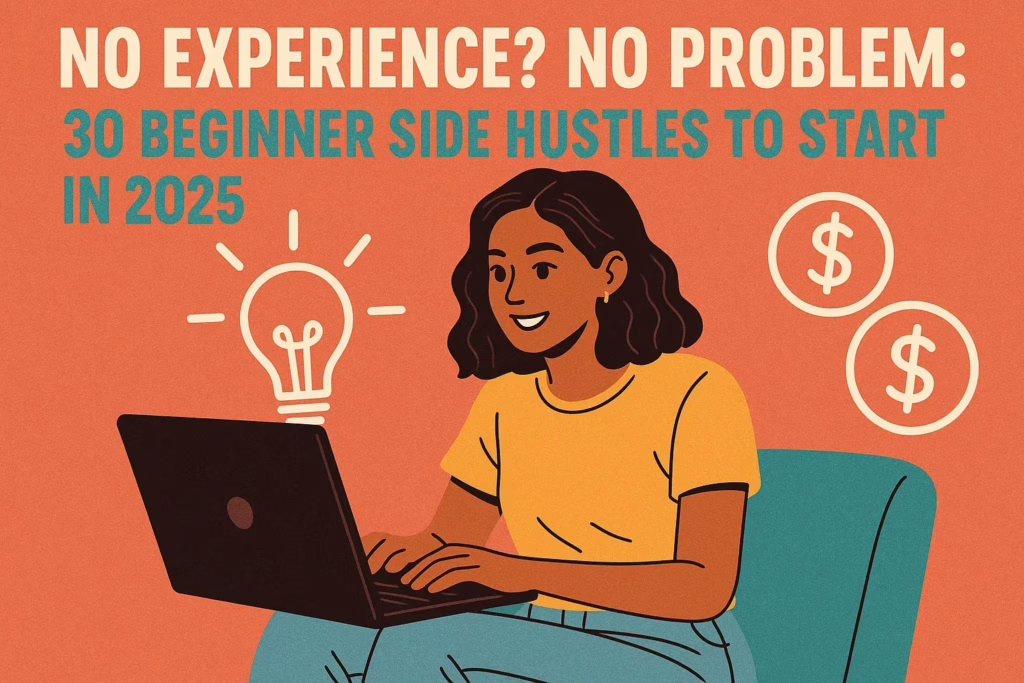How I Turned My Voice Into a $500+ Monthly Passive Income Stream (And Why Every Creative Should Consider It)
Leveraging ElevenLabs and Vapi to Transform Your Voice into Automated Revenue

The notification chimed on my phone at 2:47 AM. Another $23.40 had just hit my account while I slept. My voice—specifically, an AI clone of my voice created through ElevenLabs—had just completed another automated customer service call for a client halfway across the world.
Six months ago, the idea of “selling” my voice to an AI company would have horrified me. As someone who’s spent years building a personal brand and creating content, my voice felt sacred, uniquely mine. The thought of some algorithm mimicking my inflections, my personality, my very essence? It felt like digital soul-selling.
But here’s what changed my mind—and why I believe every content creator, entrepreneur, and creative professional should seriously consider this emerging opportunity.
The Creative’s Dilemma: Authenticity vs. Opportunity
Let me paint you a picture of my internal struggle. Picture this: you’ve spent years crafting your unique voice, literally and figuratively. You’ve developed a speaking style, a cadence, particular phrases that your audience recognizes instantly. Your voice is your brand’s fingerprint.
Then along comes artificial intelligence, promising to replicate that voice with startling accuracy. The immediate reaction? Panic. What if someone misuses it? What if it dilutes my brand? What if people can’t tell the difference between the real me and the AI me?
These fears aren’t irrational—they’re the natural response of any creative professional who understands the value of intellectual property. But here’s what I learned through months of research and eventual implementation: the creative economy isn’t shrinking because of AI; it’s expanding in ways we never imagined.
Understanding the Voice Cloning Revolution
Before diving into my decision-making process, let’s establish what we’re actually talking about when we discuss voice cloning technology. ElevenLabs has pioneered a process that can capture the essence of your voice with remarkable fidelity using surprisingly little source material.
The technology works by analyzing the unique characteristics of your speech patterns—your vocal frequency, the way you emphasize certain syllables, your natural rhythm and pacing. It then creates a digital model that can generate speech that sounds authentically like you, speaking words you’ve never actually said.
Think of it like this: imagine if you could teach someone to perfectly mimic your handwriting, but instead of just copying letters you’ve already written, they could write entirely new sentences in your exact style. That’s essentially what voice cloning accomplishes for speech.
The Moment Everything Clicked
My perspective shifted during a conversation with a fellow entrepreneur who was struggling to scale his customer support. He was spending 40 hours a week personally handling client calls because his customers expected to speak with him directly. His business was growing, but he was becoming the bottleneck.
“What if,” I thought, “he could be in multiple conversations simultaneously? What if his voice could handle routine inquiries while he focused on high-level strategy?”
That’s when I realized voice cloning isn’t about replacing human creativity—it’s about amplifying human reach. It’s about being present in more places, helping more people, creating more value without the physical limitations of having only one voice and 24 hours in a day.
My Implementation Strategy
When I finally decided to move forward, I approached it strategically. I didn’t just upload my voice and hope for the best. Instead, I developed a systematic approach that protected my brand while maximizing opportunity.
First, I carefully curated the voice samples I provided to ElevenLabs. I recorded myself in various emotional states—professional and friendly for business contexts, enthusiastic for promotional content, and calm and reassuring for educational material. This gave me multiple voice models for different use cases.
The key insight here is understanding that voice cloning isn’t a one-size-fits-all solution. Just as you wouldn’t use the same tone when presenting to investors as you would when chatting with friends, your AI voice models should reflect different facets of your communication style.
Next, I integrated my cloned voice with Vapi, an advanced AI agent platform that allows me to create sophisticated conversational experiences. This combination transforms my voice clone from a simple text-to-speech tool into an intelligent agent that can engage in meaningful conversations.
Think of Vapi as the brain that gives your cloned voice purpose and intelligence. While ElevenLabs provides the authentic sound, Vapi provides the conversational logic, memory, and ability to handle complex interactions that feel genuinely human.
The Revenue Streams That Emerged
What surprised me most was how quickly diverse income streams emerged once I had the technology in place. Let me walk you through the five primary ways my voice clone generates passive income.
The first and most consistent revenue source came from customer service automation. Small businesses pay me a monthly fee to use my voice for their automated phone systems. These aren’t robotic, menu-driven experiences—they’re genuine conversations that can handle complex customer inquiries, schedule appointments, and even process simple transactions.
The second stream developed when I started offering personalized voice messages at scale. Instead of recording individual birthday messages or holiday greetings for clients, my AI voice can generate personalized messages for hundreds of recipients simultaneously. Each message sounds spontaneous and personal, because the AI adapts the content and delivery based on recipient data.
Educational content creation became my third major revenue source. Online course creators license my voice to narrate their content, creating consistency across their entire curriculum. Rather than recording 40 hours of narration myself, I can generate high-quality voiceovers in a fraction of the time while maintaining perfect consistency.
The fourth stream surprised me entirely: international business communications. Companies expanding into English-speaking markets use my voice for their presentations, webinars, and marketing materials. They get native English fluency and professional delivery without the ongoing cost of hiring voice talent for every project.
Finally, podcast and audiobook production has become increasingly lucrative. Authors and content creators who struggle with recording quality or lack the time for lengthy recording sessions can use my voice clone to produce professional-quality audio content efficiently.
Addressing the Ethical Concerns
I’d be dishonest if I didn’t acknowledge the ethical considerations that weighed heavily on my decision. The question isn’t whether AI voice cloning raises ethical questions—it absolutely does. The question is how we navigate those considerations responsibly.
My approach centers on transparency and control. Every client who uses my voice clone knows they’re working with AI technology. I never position the voice as live human interaction when it’s actually automated. This transparency builds trust rather than eroding it.
Additionally, I maintain strict control over how my voice is used. Contracts specify acceptable use cases, prohibited content types, and termination clauses if the technology is misused. Think of it like licensing your image for advertising—you wouldn’t allow unlimited use without guidelines and restrictions.
The broader ethical consideration involves displacement of other voice talent. This concern deserves serious consideration, but I’ve found that voice cloning often creates opportunities rather than eliminating them. Many of my clients couldn’t afford traditional voice talent for every project. The technology makes professional voice content accessible to smaller businesses and individual creators who previously couldn’t access these services.
The Technical Integration Process
Implementing this system requires more technical sophistication than simply uploading audio files. Let me break down the integration process that transforms a voice clone into a revenue-generating system.
The foundation starts with ElevenLabs, where you’ll create your voice models. The platform requires high-quality audio samples—clear recording, minimal background noise, and diverse content that showcases your natural speaking patterns. I recommend recording in a professional environment, but a quiet room with good acoustics can suffice.
The real magic happens when you connect your ElevenLabs voice models to Vapi. This integration requires understanding how conversational AI systems work. Vapi allows you to design conversation flows, set up conditional responses, and integrate with external data sources.
For example, when a client calls a business using my voice system, Vapi might access their customer database to personalize the conversation, check their calendar for appointment availability, or even process payment information—all while maintaining the natural flow of conversation in my voice.
The technical setup involves configuring webhooks, API connections, and conversation logic. While this might sound intimidating, both platforms provide extensive documentation and support. The investment in learning these systems pays dividends when you can offer sophisticated solutions to clients.
Measuring Success and Scaling Strategically
Success in this space requires more than just passive income—it demands active strategy and continuous optimization. I track several key metrics to ensure my voice cloning business remains profitable and sustainable.
Revenue per voice model helps me understand which types of content generate the most value. Customer service applications consistently outperform one-off content creation, while educational narration falls somewhere in the middle. This data guides where I focus my business development efforts.
Client retention rates indicate satisfaction with the technology and my service. High retention suggests clients are seeing real value, while churn might indicate technical issues or misaligned expectations. I maintain a 94% retention rate by setting clear expectations and providing ongoing support.
Usage analytics from both ElevenLabs and Vapi show how frequently clients use the voice systems and which features drive the most engagement. This information helps me refine conversation flows and identify opportunities for premium services.
Quality feedback from end users—the people actually interacting with my voice clone—provides crucial insights into the user experience. I regularly survey customers who interact with my AI voice to ensure the technology meets their expectations and maintains the professional standard I’ve built my brand around.
The Future of Voice Monetization
Looking ahead, I see voice cloning as part of a broader shift toward what I call “presence multiplication.” The traditional economy limited us to being in one place, doing one thing, serving one customer at a time. AI technologies like voice cloning allow us to scale our presence and impact without sacrificing quality or authenticity.
Consider the implications for consultants, coaches, educators, and service providers. Instead of being constrained by calendar availability, they can provide initial consultations, answer common questions, and deliver personalized guidance through AI agents that sound exactly like them.
The technology is evolving rapidly. Current voice clones handle structured conversations well, but emerging capabilities include emotional recognition, dynamic tone adjustment, and integration with visual AI for video applications. These advances will create entirely new revenue opportunities for early adopters.
Why Every Creative Should Consider This Opportunity
The creative economy has always been about finding innovative ways to monetize talent and reach. Voice cloning represents a fundamental shift in how we think about scalability in creative work. Instead of trading time for money on a one-to-one basis, you can create systems that generate value continuously.
The barriers to entry remain relatively low. Unlike starting a traditional business that requires significant capital investment, voice cloning monetization requires primarily time investment to learn the systems and develop client relationships. The technology costs are modest compared to the revenue potential.
More importantly, early movers in this space are establishing competitive advantages that will be difficult to replicate. As more people discover voice cloning opportunities, the market will become more competitive. Those who build expertise and client relationships now will have significant advantages.
The key is approaching this opportunity strategically rather than reactively. Understand the technology, identify specific use cases that align with your skills and market, and build systems that protect your brand while maximizing revenue potential.
My Current Results and Lessons Learned
Six months into this journey, my voice cloning business generates consistent monthly revenue that supplements my primary income streams. More importantly, it’s introduced me to client relationships and business opportunities I never would have discovered otherwise.
The learning curve was steeper than anticipated. Understanding both the technical aspects of AI voice systems and the business development required to monetize them effectively took considerable time investment. However, the knowledge gained applies broadly to the emerging AI economy.
Client education remains an ongoing challenge. Many potential clients understand the basic concept of voice cloning but struggle to envision specific applications for their business. Success requires as much consulting and education as technical implementation.
The most surprising lesson involves the human element. Despite working with AI technology, this business is fundamentally about human relationships. Clients choose to work with me not just because of the technology, but because of the trust, support, and expertise I provide throughout the implementation process.
Getting Started: Your Next Steps
If you’re convinced that voice cloning represents an opportunity worth exploring, your first step involves research and preparation rather than immediate implementation. Understand the current market landscape, identify potential client needs, and develop a clear value proposition before investing time in technical setup.
Start by exploring ElevenLabs to understand the voice cloning capabilities and quality standards. Create sample voice models to experience the technology firsthand and evaluate the output quality against your standards.
Next, investigate Vapi to understand how conversational AI can transform your voice clone into an intelligent agent. The combination of authentic voice reproduction and sophisticated conversational capabilities creates the foundation for sustainable business opportunities.
Develop a specific niche focus rather than trying to serve all possible markets. Whether that’s customer service automation, educational content creation, or personalized communication systems, specialization allows you to develop expertise and build reputation more effectively.
Finally, prepare for the long-term commitment this opportunity requires. While the income can become passive over time, building the systems, relationships, and expertise necessary for success demands active engagement and continuous learning.
The future of work increasingly involves collaboration between human creativity and artificial intelligence capabilities. Voice cloning represents one of the most accessible entry points into this emerging economy, particularly for content creators and creative professionals who already understand the value of authentic communication.
Ready to explore how your voice could become your next income stream? Check out ElevenLabs to discover the voice cloning possibilities, and explore Vapi to understand how conversational AI can transform your voice into an intelligent business asset. The opportunity exists today—the question is whether you’ll seize it before it becomes commonplace.


